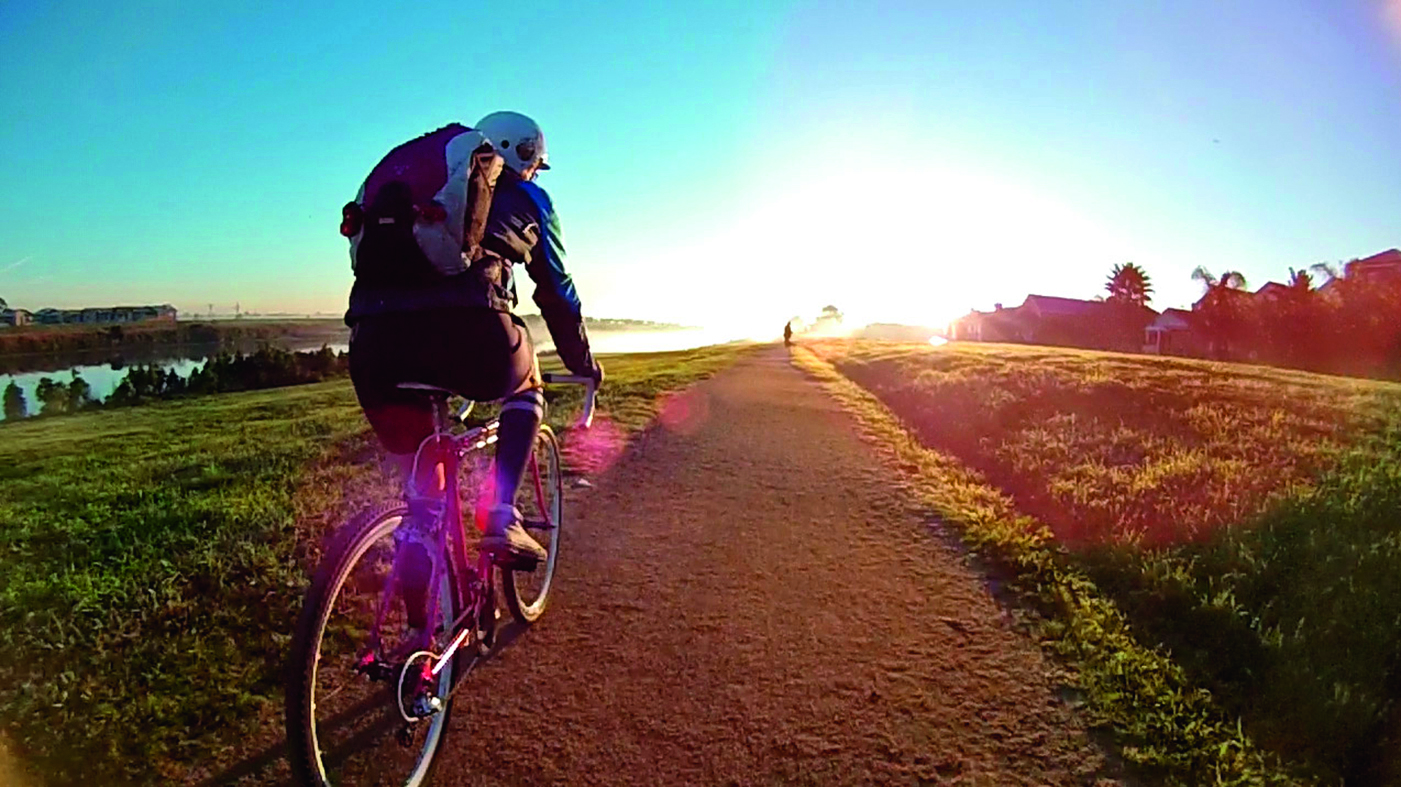Taking a less experienced rider for a pedal is a great way to encourage their riding—providing you don’t overdo it—finds Margot McGovern.
Do you remember your early days of bike riding—legs burning, bum aching and appetite insatiable as your body adjusted to life on two wheels—when a spin down the local bike path was an adventure and even a short distance felt like a gran fondo? Cycling has a steep learning curve and, once we’ve broken in our legs, it’s easy to forget that there was a time when pedalling didn’t come as naturally as walking. However, when organising a fun ride for someone with less experience than yourself, it’s important to remember that what comes easily to you is likely challenging for them and, as the more seasoned rider, you need to be patient and take a few precautions to ensure their riding experience is a good one. Sadly, this is a lesson that I learned the hard way.
I hadn’t been riding more than a month when my housemate, intrigued by my newfound superpower to eat unlimited doughnuts without going up a dress size, begged me to take her for a pedal. Thrilled, I proposed a jaunty trundle to a beachside cafe via Adelaide’s Linear Park track. I was quietly proud of my plan: it was a scenic, off-road route, protected from the wind and with no real hills. We filled up a couple of drink bottles, my housemate dragged her clunking, department store bike from where it had been rusting in her parents’ shed since high school, and away we went. Needless to say, things did not go well. After a relatively uneventful, if sluggish, ride to the beach, we lingered too long at the café and ended up riding home through the hottest part of a scorching December day. Though we’d refilled our water bottles, they lasted only half the journey home, not to mention the fact that 35km on an ill-fitting, unserviced pile of junk was never going to be a pleasant experience for my housemate, especially with me gliding ahead on a shiny new steed. Our friendship survived, but my housemate hasn’t been near a bike since. In hindsight, I should have picked a shorter route for our first ride, packed extra provisions, planned around the weather and, most importantly, made sure my housemate had a correctly sized bike in good working order.
However, soon after this incident, I got a taste of what I’d dished my friend when my boyfriend dreamed up a romantic (and rather ambitious) plan to ride the veloway from Adelaide to McLaren Vale—a 100km round trip. My boyfriend is well along the crazy scale in his devotion to riding, and of the opinion that gears are for the weak. Not knowing any better myself at that point, I believed him when he said that I’d be fine wearing running shorts and street shoes, carrying a hefty backpack and riding my singlespeed. I also believed him when he said there were bakeries en route where we’d stop for breakfast. There were no bakeries and I was not fine. By the time we arrived home I was a shaking, blubbering mess with cramping legs and dangerously low blood sugar. As the more experienced rider, my boyfriend should have considered that a ‘go hard or go home’ attitude wasn’t the right approach when taking someone on their first long distance ride, and that making false promises of baked goods to a bonking cyclist is never a wise move. Having considerably more bike knowledge, he should have also explained the benefits of technical riding gear and talked me through the pros and cons of single-speeds vs geared bikes.
Looking back, it’s clear that both rides were doomed to end miserably. Less experienced riders may not be aware of their limits or think of things that you take for granted, so you need to put yourself in their shoes and plan ahead to ensure they have a great time and want to keep riding. With that in mind, here are my tips for making sure you encourage, rather than deter, them.
Check their bike make sure it’s the correct size and in good working order.
Pick a route to suit their riding ability Even if they’re reasonably fit, they may not be ‘bike fit’. Start with shorter distances and work your way up. It’s also best to stick to quiet backstreets and off-road paths while they build confidence.
Be prepared Carry plenty of water. Your friend may not realise just how much they’ll need to drink. Sunscreen, snacks, spare tubes, puncture repair kit, tyre levers and a multi-tool are also a good idea.
Be patient Getting frustrated or zipping ahead will only make your friend feel they’re holding you back, which can be very demoralising.
Stay positive Offer encouragement and remember that you were once as green as your friend is now.
Ride On content is editorially independent, but is supported financially by members of Bicycle Network. If you enjoy our articles and want to support the future publication of high-quality content, please consider helping out by becoming a member.


Be a roll model.
I think the word you are looking for is “role”.
Unless “roll model” is an intentional clever play on words.
Dude, tell me you’re not serious?! You don’t get that the word ‘roll’ is simply used in this context as a play on words? Spend less time focussing on grammar and just enjoy the content. Good article.
*focusing